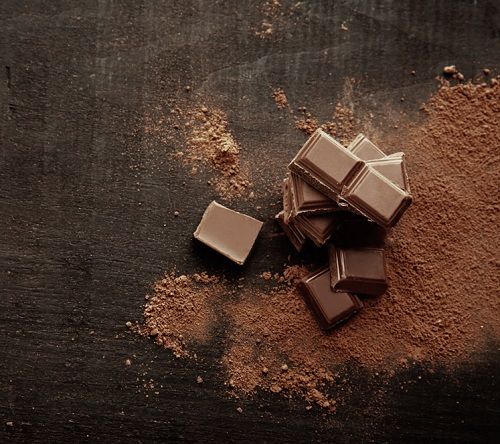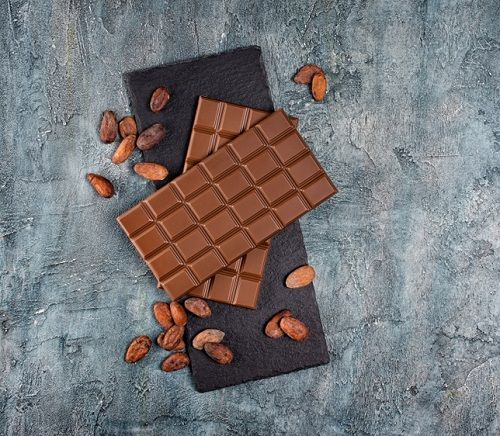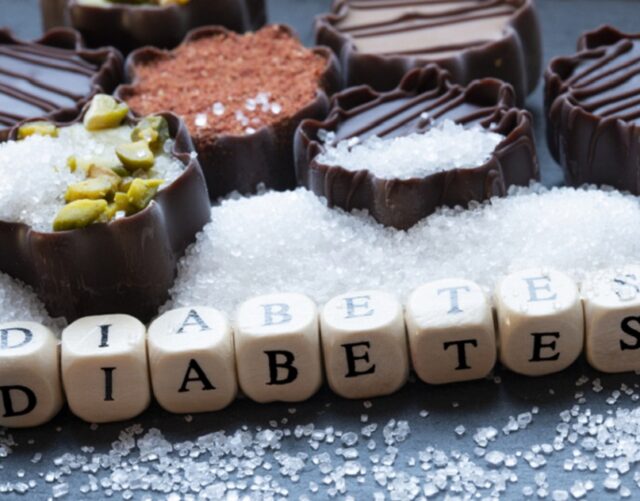This will help to manage your diabetes and reduce your risk of long-term complications.
When you have diabetes it’s important to make healthier food choices and be smart with the snacks you choose, swapping things like crisps, biscuits, ice cream and chocolate for yoghurts, unsalted nuts, seeds, fruits and vegetables.
That said, celebrations such as Easter and Christmas only come once a year, so don’t worry about the odd one or two indulgences as these will not affect your long-term diabetes management.
 It’s a myth that you can’t eat chocolate if you have diabetes, just eat it in moderation, and try not to eat a lot in one go as it affects your blood sugar levels.
It’s a myth that you can’t eat chocolate if you have diabetes, just eat it in moderation, and try not to eat a lot in one go as it affects your blood sugar levels.
Can I eat ‘diabetic’ chocolate?
We do not recommend ‘diabetic’ chocolate. Diabetic chocolate is just as high in fat and calories as ordinary sugar free chocolates, it can still raise blood glucose levels and is often more expensive than regular chocolate.
To say food is a diabetic food is now against the law. This is because there isn’t any evidence that these foods offer you a special benefit over eating healthy. These foods can also sometimes have a laxative effect.
Chocolate and Children
Easter and Christmas are a fun time for children. There are Easter eggs, Christmas chocolate and sweet treats to be eaten and Easter egg hunts they’ll want to be part of. Having diabetes doesn’t stop them from being part of the fun.
Keep an eye on how much sugar free chocolates they eat and try to spread Easter eggs and Christmas chocolate out over several days (or weeks), rather than have them eaten all at once. While occasional sugar free chocolates treats don’t affect their long term diabetes management, encourage them to make healthier food choices most of the time. As before, we wouldn’t recommend diabetic chocolate Easter eggs or Christmas chocolate.
Remember if you or your child carb counts, check the chocolate label so that you can calculate how many carbs have been eaten and adjust insulin doses accordingly.

How to enjoy chocolate as part of a healthy, balanced diet
- Instead of ‘diabetic’ sugar free chocolates, try choosing good-quality dark chocolate (70% cocoa is best). It has a stronger taste than milk chocolate, so you are likely to eat a bit less.
- Decide how much you are going to eat and put the rest of the sugar free chocolates away, out of reach. This should help prevent you from having ‘just one more piece’ and eating more than you planned to.
- Read the labels for carb content to help adjust your insulin levels.
- Think about other non-food gifts that can be enjoyed just as much as chocolate.
Your tips
- “If you crave chocolate, buy a quality bar with a high cocoa content, break it into squares and store it in your fridge or freezer. Then when you really want an occasional treat, help yourself to a square. Because it’s cold, it takes longer to melt in your mouth.”
- “Just enjoy Easter and don’t let diabetes rule anything you do in life.”
- “Do remember to count the carbs – most packages have info on the back.”
- “Don’t buy ‘diabetic’ Easter eggs. They have a nasty effect on the guts. Have some normal choc and enjoy.”
- “Don’t wrap your child up in cotton wool – let them carry on as normal and just have eyes in the back of your head for signs of a high or low as the little monsters don’t always tell you if they’re too busy having fun.”
- “For Easter egg hunts the prize doesn’t all have to be sugar free chocolates. For children, try pencil cases filled with things like keyrings and toys. For adults, you could find a plastic egg and fill it with perfume or jewellery.”











